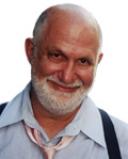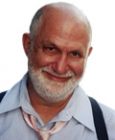Fear
The Age of Paranoia
Much of what ails us - and the country - resembles paranoia
Posted November 9, 2009
W.H. Auden, the great British poet, coined "The Age of Anxiety" to characterize the post-WWII era. Anxiety is a free-floating dread that something beyond our control will cause us harm. Auden used anxiety to describe how people desperately sought emotional stability in a fast-changing technological world.
Auden's insight proved strikingly prescient about our reliance on tranquilizers, drugs designed to combat anxiety and to which many, like Betty Ford, became addicted. Auden's metaphor thus took on a medical reality, as people were diagnosed with and treated for the thing he conceived as a cultural template or miasma.
Now, at both an individual and a societal level, paranoia seems to be the mental condition du jour. Paranoia has a way of feeding off itself - leading people to act in ways that support the paranoid delusions that assail them.
We are still plenty anxious. Paranoia shares traits with anxiety - primarily dread and a sense of loss of control. But paranoia includes the idea that the bad things are due to a single, identifiable source. This force could be a religion, a person or a group of people, a political ideology, or an agency or organization. Paranoia is generally a delusional state.
The teabag movement - led by Glenn Beck and Congresswoman Michele Bachmann - is a post card expression of paranoia. Teabaggers direct their pervasive concerns at a few individuals. Beck et al. believe that the President and his administration are attacking the soul of America - and their souls. They frequently refer to Dachau, national socialism, and communism.
There is profound paranoia on the economic front all along the political spectrum. Conservatives AND liberals feel that bailouts are arranged for the benefit of Wall Street insiders by leaders of both parties who rely on former Goldman Sachs directors and people who have worked closely with them.
At the same time many people are suspicious about the presence of immigrant and unfamiliar religious groups in our midst. For their parts, as demonstrated by Dr. Nidal Hasan, people in these groups are paranoid about the intentions of the rest of the country towards them. Thus, there is a reciprocal exchange between anti-immigrant paranoia and paranoid acting out by its targets.
Of course, we are paranoid about the intentions of those overseas who wish to destroy the United States. But a remarkably large percentage of Muslims internationally support jihadists because they fear American intentions and believe that we hate them. Many Muslims believe that the American government itself launched the 9/11 attacks in order to justify wars against Muslim nations.
Here are the consequences of paranoia on an individual and a societal level: anxiety, scapegoating of others unlike us, a readiness for violence, political polarization built on extreme scorn and anger towards leaders of opponets, and psychological distress. Paranoiacs are notable for their failures at coping. The resulting feeling that the world is against you is an extremely unhappy one.
The recommended drugs for treating paranoia are antipsychotics. But these are meant to counter hallucinations and delusions. Antidepressants and tranquilizers are often used to treat nonpsychotic paranoid states - like the ones you and I are experiencing now! The Age of Paranoia will make the tranquilizer boom in the Age of Anxiety a minor blip in the history of pharmacological coping.
Follow Stanton on Twitter


